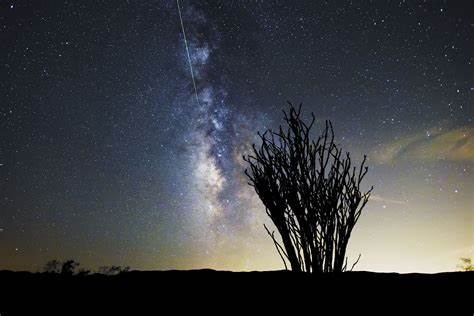This is the VOA Special English Science Report.
This month, you can see with your own eyes how material from space falls to Earth.
Space material, which is mostly rock, is often captured by Earth’s gravity and falls to the surface of our planet. These falling space rocks are called meteors. Large numbers of meteors fall during a meteor shower. The Perseid (PER-see-id) meteor shower is the most famous of these events.
The Perseid meteor shower happens in early August every year. The largest number of meteors is expected to fall on August twelfth. Scientists measure meteor showers by the average number of meteors that fall in an hour. About ninety-five meteors fall in an hour during the most active day of the Perseid shower.
The Italian scientist Giovanni Schiaparelli named the Perseid meteor shower in Eighteen-Sixty-Six. He called it the Perseid meteor shower because its meteors appear to come from the group of stars called Perseus (PER-see-us). Meteor showers are named for the group of stars, or constellation, from which they come.
Mister Schiaparelli discovered that the Perseid meteors had the same orbit as a comet, another kind of space object. A comet is a large body of gas, ice and rock. The Italian astronomer found that the Comet Swift-Tuttle had the same orbit as the Perseid meteors. Mister Schiaparelli’s discovery showed that meteor showers come from material left behind by comets.
Traditionally, people believed that meteors were a weather event. Edward Herrick of New Haven, Connecticut, was one of the early theorists who suggested that meteors came from space. In Eighteen-Thirty-Eight, Mister Herrick published a report claiming to have discovered a meteor shower in August.
But he soon found that people had observed the August meteor showers for centuries. One German tradition calls the Perseid meteors the “tears of Saint Lawrence.” This was in honor of a religious person who was put to death by the Romans in the Third Century. The anniversary of the death of Saint Lawrence is August tenth.
To see the Perseids all you need to do is to watch the sky. This year, the moon will brighten the sky, making it more difficult to see meteors. But you still should be able to see about one meteor every minute during the early morning hours of August twelfth.
This VOA Special English Science Report was written by Mario Ritter.
